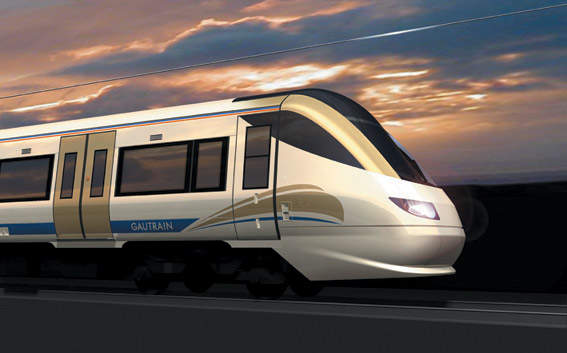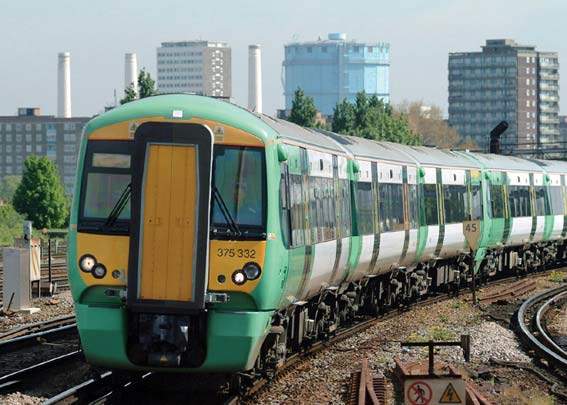Rail transport in the Johannesburg area of South Africa entered a new era in 2011 with the opening of the Gautrain Rapid Rail Link. The project serves the Gauteng area with a rapid transport service and provides a safe, efficient and reliable service to both commuters and airport travellers.
The Gautrain project was the subject of extensive planning, following feasibility studies in the late 1990s to produce the first plans for a north-south and east-west rail route serving the Gauteng Province. As with many other rapid transit projects, Gautrain was aimed at reducing road congestion and aiding economic development.
The Rs25.4bn project is managed as part of the Gauteng Department of Finance and Economic Affairs Public Private Partnership Unit and was initiated by the provincial government.
After opening the project to tender, the chosen consortium was Bombela (Bombardier, Bouygues Travaux Publics, South African civil contractor Murray & Roberts and Strategic Partners Group), which will also maintain and operate it for 20 years. The final section of the rail track was completed in June 2012.
Details of the Gautrain Rapid rail link project
There are two main routes on the 80km-long network: a north-south line from Hatfield to Marlboro and an east-west line from Park station (via Marlboro) to Johannesburg International Airport.
Phase 1 included stations at Sandton, Marlboro, Midrand, Rhodesfield and Johannesburg International Airport. Phase 2 extended the system from Sandton to Rosebank and Park Station – in Johannesburg – and from Midrand to Centurion, Pretoria and Hatfield, completing the 80km network.
Following the awarding of the contract to the Bombela Consortium in September 2006, work took place on both routes, with the aim of commercial services starting in 2011. Gautrain started operations between Rosebank station in Johannesburg and Hatfield on 2 August 2011. The remaining section became operational in 2012.
Infrastructure of Gautrain Rapid rail link
The construction and completion of the project witnessed various stages of development. Going by the schedule, Sandton to OR Tambo International Airport was completed and tested in approximately 45 months from the start of construction. The remaining six stations inclusive of the links from Sandton to Johannesburg Park Station and Midrand to Hatfield were completed and tested in 54 months.
Gautrain’s tunnel boring machine (TBM) recently completed its last meter project. The TBM completed a 3km tunnel running between Rosebank station and Emergency Shaft 2, situated at the Wilds in Houghton. The remaining 15km tunnel between Johannesburg Park Station and Marlboro Portal was excavated using conventional drilling and blasting methods.
In the southern section, the Johannesburg Park Station base slab at rail level was completed along with the construction of platform walls.
There are seven emergency access shafts in the single-track rail tunnel between Park Station and Sandton Station. The shafts will give emergency services personnel access to the tunnels. Safe havens are available at the bottom of some of these shafts, where passengers can gather in case of an emergency.
At Emergency Access Shaft E2 (The Wilds, Houghton), tunnelling from the end of the connecting passage was completed along the main tunnel route in both southerly and northerly directions.
Construction work was also performed at Sandton Station’s three-level underground parkade.
The tunnel excavation from Marlboro Portal was accompanied by construction of invert slabs, walkways and the partition wall towards MFP, and the cut and cover structure adjoining the portal.
In the northern section, the project built depot facilities, including the Bus Depot and the Train Depot administration buildings. The Operations Control Centre (OCC) in the train depot administration building is the main centre from where telecommunications, signalling, traction power and distribution of CCTV cameras, automatic fare collection and maintenance are managed. At the Train Depot, Gautrain’s 24 train sets are maintained, serviced, cleaned and securely stabled overnight.
Rolling stock on Gautrain Rapid rail link
Bombardier supplied a fleet of 96 Electrostar vehicles, based on the 1,100 already in service in the UK, where they achieved high availability figures. In South Africa, they were formed into three and four-car sets, and usually ran at up to 160km/h (100mph) with 80 seated and 20 standing passengers. Part of the order is dedicated to the airport service, with these trains accommodating only seated passengers.
The vehicles were manufactured at Bombardier’s Derby facilities in the UK, which was tasked with building a new fleet of trains for commuter rail services in the London suburbs. Final assembly took place in South Africa and the fleet was based at a purpose built maintenance facility located at Midrand, just north of the junction at Marlboro.
Fare technology
Collection of passenger fares is based on a contactless smart card (CSC) system using a smart chip and RFID, which enables customers to hold the card near a card reader to register their journey by a system. Passengers can register their cards with the Gautrain operator, which enables blacklisting of the card in case of lost or stolen.
The moment any misuse happens, the AFC system automatically generates auditable transaction data and management reports and secures revenue by access control and fare media security. Then the access control gives out audible warnings to drivers, leading to blacklisting. In addition, the CSCs use a variety of electronic access controls to prevent incomplete transactions by the commuters.
Gautrain Rapid rail link signalling and communications
The OCC located at the Midrand Depot fully controls all the train movements and comprise a communications control centre to monitor the bus feeder system and key stations. This comprises Bombardier’s CITYFLO 250 system, a fixed-block signalling system based on “distance to go” principles with major information that is regularly transmitted to the onboard Automatic Train Protection (ATP) system.
The train service is fitted with a fully integrated audio and visual passenger information system. This includes external visual information about the destination using ultra-bright yellow LEDs. Inside the train, each car is fitted with two high-resolution display units providing regular information about the train’s destination and movements. In case of delays, train drivers and conductors can make announcements using the public address system.
Safety and security
Relying on the best international security technology, Gautrain maintains the highest standards used by modern trains in Europe and the US. More than 650 closed circuit television cameras were installed on trains and station precincts.
Also commuters can see policing by Gautrain security officers and the SAPS Transport Police. In a bid to prevent vandalism and unwanted entries, a 2.4m-tall security fence is maintained and monitored on-screen. A computerised signalling system prevents head to head train collisions. Gautrain uses an internationally used wider track gauge-‘Standard Gauge’, to ensure safety at higher speeds. In case of any untoward incidents, alarm systems automatically register for necessary rescue actions.
To enhance safety there is an onboard ATP system. This is a safety-critical system that constantly monitors the movement of the train. It also warns the driver in case of over-speeding and when approaching stop signals. In case the driver does not reduce speed sufficiently, the system automatically orders the vehicle to apply controlled brakes.
The system is designed for a maximum train speed of 160km/h. The interlocking system provides movement authority information to the train that allows the train to calculate and monitor a smooth journey and apply gradual brake.
Other developments
Gautrain will bring a modern railway route to the area and with its connection to Johannesburg International Airport and stations in densely populated commuter areas, will become an important role in social regeneration.
Alongside the railway operation, the Gautrain network has bus feeder services to eliminate the need for private car usage to reach stations on the system, contributing to an overall reduction in congestion and pollution.












